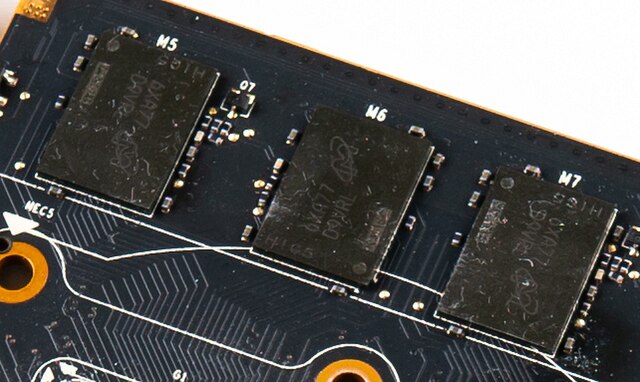Top Qs
Timeline
Chat
Perspective
Video random-access memory
Type of dedicated computer memory From Wikipedia, the free encyclopedia
Remove ads
Video random-access memory (VRAM) is dedicated computer memory used to store the pixels and other graphics data as a framebuffer to be rendered on a computer monitor.[1] It often uses a different technology than other computer memory, in order to be read quickly for display on a screen.

Remove ads
Relation to GPUs
Independent system RAM and video RAM
Unified memory

Many modern GPUs rely on VRAM. In contrast, a GPU that does not use VRAM, and relies instead on system RAM, is said to have a unified memory architecture, or shared graphics memory.
System RAM and VRAM have been segregated due to the bandwidth requirements of GPUs,[2][3] and to achieve lower latency, since VRAM is physically closer to the GPU die.[4]
Modern VRAM is typically found in a BGA package[5] soldered onto a graphics card.[6] The VRAM is cooled along with the GPU by the GPU heatsink.[7]
Remove ads
Technologies
- Dual-ported video RAM, used in the 1990s and at the time often called "VRAM"
- SGRAM
- GDDR SDRAM
- High Bandwidth Memory (HBM)[8]
See also
- Graphics processing unit
- Tiled rendering, a method to reduce VRAM bandwidth requirements[9]
References
Wikiwand - on
Seamless Wikipedia browsing. On steroids.
Remove ads


